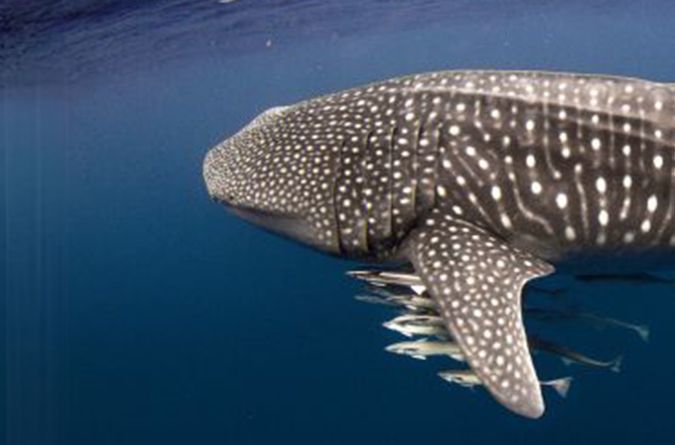SAMPA
South Ari Marine Protected Area, a pristine sanctuary located within the Maldives. Spanning across breathtaking landscapes, this marine reserve is dedicated to conserving the region's vibrant coral reefs and diverse marine life. Dive into its crystal-clear waters to explore an underwater paradise teeming with colorful fish, majestic manta rays, and gentle whale sharks. Learn about the conservation initiatives aimed at preserving this ecologically significant area and discover why it's a must-visit destination for nature lovers and eco-conscious travelers alike.
Which itineraries include SAMPA?
We dive and/or snorkel SAMPA All year round. Best of Maldives, Best of Ari and Manta Madness include exploring SAMPA.
South Ari Marine Protected Area Information
10 Facts about SAMPA:
1. Whale Shark Haven:
The South Ari Atoll Marine Protected Area (SAMPA) is renowned as a haven for whale sharks, attracting these gentle giants in significant numbers.
2. Whale Shark Capital:
SAMPA is recognized as one of the world's premier
destinations for whale shark encounters, offering unparalleled opportunities to observe these magnificent creatures up close.
3. Year-Round Presence:
Whale sharks can be found in the waters of SAMPA throughout the year, making it an ideal destination for year-round whale shark sightings.
4. Feeding Grounds:
SAMPA's nutrient-rich waters provide abundant food sources for whale sharks, supporting their presence and ensuring regular sightings in the area.
5. Tourist Magnet:
Whale shark encounters are a major draw for tourists visiting SAMPA, contributing to the region's tourism industry and generating awareness about the importance of marine conservation.
6. Research Hub:
SAMPA serves as a hub for whale shark research and conservation efforts, with ongoing studies focused on understanding their behavior, migration patterns, and population dynamics.
7. Ecotourism Opportunities:
SAMPA offers unique ecotourism opportunities for visitors to swim alongside whale sharks in their natural habitat, providing unforgettable experiences while promoting responsible wildlife tourism.
8. Photographic Paradise:
SAMPA's clear, turquoise waters and abundant marine life offer photographers the chance to capture stunning images of whale sharks against the backdrop of the Maldivian seascape.
9. Conservation Initiatives:
SAMPA's establishment includes stringent conservation measures aimed at protecting whale sharks and their habitat, including regulations on fishing practices, tourism activities, and coastal development.
10. Global Importance:
SAMPA's status as a whale shark hotspot underscores its global significance for marine conservation, highlighting the need to safeguard this unique ecosystem for future generations.
5 Best diving and snorkeling practices with whale sharks
1. Maintain Distance:
Keep a respectful distance from whale sharks to avoid causing stress or disturbance. Adhere to guidelines provided by marine authorities or tour operators, typically recommending a minimum distance of 3 to 4 meters (10 to 13 feet) from the animal.
2. Passive Observation:
Practice passive observation by allowing the whale shark to approach you rather than actively pursuing it. Avoid sudden movements, loud noises, or splashing that could startle or disrupt the animal's natural behavior.
3. Avoid Crowding:
In crowded areas, be mindful of the number of snorkelers or divers in the water to prevent crowding around the whale shark. Allow ample space for the animal to move freely and avoid creating barriers or obstacles in its path.
4. Respectful Photography:
If capturing photographs or videos, do so responsibly by using non-invasive techniques. Refrain from using flash photography, reaching out to touch the animal, or getting too close for the sake of a better shot. Prioritize the welfare of the whale shark over obtaining the perfect picture.
5. Educate Others:
Share knowledge and information about whale sharks and their conservation with fellow snorkelers, divers, and tourists. Encourage others to practice responsible wildlife viewing and support initiatives aimed at protecting these magnificent creatures and their habitat.
By following these best practices, snorkelers and divers can enjoy unforgettable encounters with whale sharks while minimizing their impact on these vulnerable species and contributing to their conservation.



To identify whale sharks, several key features can be observed.
Firstly, their size is remarkable, often reaching lengths of up to 12 meters (40 feet) or more.
Their body is predominantly gray with a distinctive pattern of white spots and stripes along their sides.
These spots and stripes are unique to each individual, akin to a fingerprint, making them invaluable for identification purposes.
Additionally, whale sharks have a wide, flattened head with a large mouth positioned at the front of the head, allowing them to filter-feed on plankton and small fish.
Their mouth can stretch up to 1.5 meters (5 feet) wide, creating a gaping appearance when feeding. Finally, whale sharks possess a crescent-shaped caudal fin (tail fin) and a prominent dorsal fin located towards the rear of their body.
By closely observing these features, researchers can accurately identify and track individual whale sharks, contributing valuable data to ongoing research and conservation efforts.
If you have whale shark sightings to report or would like to contribute to research efforts, please contact The Whaleshark Research Maldives team at [email protected] for information on how to submit your observations. Your contributions play a crucial role in furthering our understanding and conservation of these magnificent creatures.
